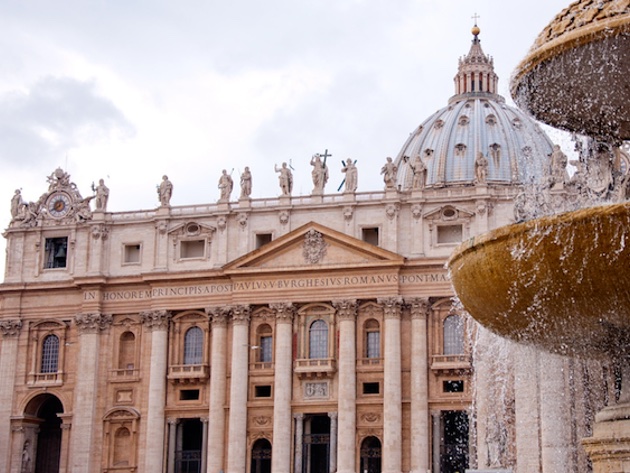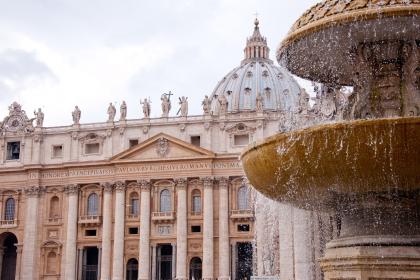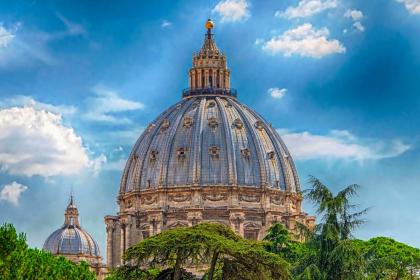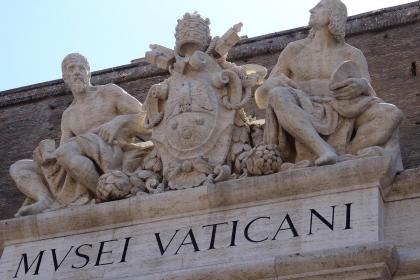
The Vatican Necropolis from the pre-Constantinian era is located in the Vatican Caves, about ten meters deep from St. Peter's Basilica, in correspondence with the central nave. Excavated between 1939 and 1949, the underground necropolis developed between the end of the 1st century AD. and the 4th century AD. and, at first, it was used by Christians and non-Christians. The burial ground occupied an area next to Caligula's Circus, which later became Nero's, where, probably during Nero's persecution of Christians, Saint Peter was martyred.
In fact, under the current basilica, there are brick mausoleums arranged along a funerary road. The oldest mausoleums are those on the northern row of the road, dating back to the 2nd century AD, while those on the southern side, later, are from the 3rd century AD. The tombs have niches in the walls for the urns of the ashes and arcosolia for burial, inscriptions with the names of the deceased and are decorated inside with paintings and stuccos; some of them have black and white mosaic floors.
Among the most important mausoleums we remember that of the Giulii family, transformed from pagan into Christian in which there are paintings of a Christian theme, such as Jonah inside the jaws of the whale and the Good Shepherd, while on the vault there is a mosaic of Christ on the chariot of the Sun, as the pagan god Apollo. Rich in frescoes, mosaics, stuccoes and bas-reliefs are also those of the Cetenni, Tulli and Valerii families. There are also numerous sarcophagi from the 2nd, 3rd and 4th centuries, with the depiction of various scenes, in which the figure of Dionysus-Bacchus predominates.
Subsequently, the space of the necropolis was occupied by other tombs, even if most of the Christian tombs were concentrated in the western part, where there is a rectangular square surrounded by mausoleums built around what is identified as Peter's tomb, near the Circus in which the apostle was martyred. This was originally a simple pit; around the middle of the 2nd century AD. A monument was built on the tomb against a wall, which was accessed via two stairs to the south. It consisted of a niche with two columns that supported a covering travertine slab, above which was a smaller niche. An underlying, underground niche contained Peter's tomb, as also confirmed by a graffiti on the wall behind the larger niche, in which the apostle's name can be read in Greek characters. Among the inscriptions, the one on the mausoleum of Popilius Heracla is particularly interesting, which reports a part of the will, in which the deceased requests that his tomb be built "in the Vatican, next to the Circus..."; this constitutes a precious topographic indication for locating Caligula's Circus.
In the 4th century Constantine had the basilica built right above Peter's tomb. Begun around 320 AD, it was consecrated in 326 by Pope Sylvester I and completed in 349. It had five naves divided by columns, preceded by a colonnaded atrium and closed by an apse separated from the naves by a transept, in the center of which was the Peter's funeral monument. Above the tomb there was an aedicule, located in the center of the presbytery, above which a canopy was built supported by four twisted columns with depictions of cherubs harvesting the grapes; two other columns were placed behind in the apse. The Constantinian basilica had no altar, as it was not intended for liturgy but for funerary use. Only later, in the 6th century, to carry out the liturgical service and protect the tomb was the floor of the presbytery raised, in front of which a double row of six twisted columns was added, the innermost of which was closed by plutei (marble slabs). Eleven of these columns are still found in the current St. Peter's Basilica. Peter's tomb was accessed via two side stairs. The Constantinian basilica remained intact until the 15th century, until Pope Nicolò V (1447-1455), due to the precarious conditions of the building, decided to reconstruct it.
The Basilica of St. Peter in the Vatican

 Condividi
Condividi
Saint Peter's Dome

 Condividi
Condividi
The Vatican Museums and The Sistine Chapel

 Condividi
Condividi
Information
 Condividi
Condividi
Location
To find out about all accessibility services, visit the Rome accessible section.












































